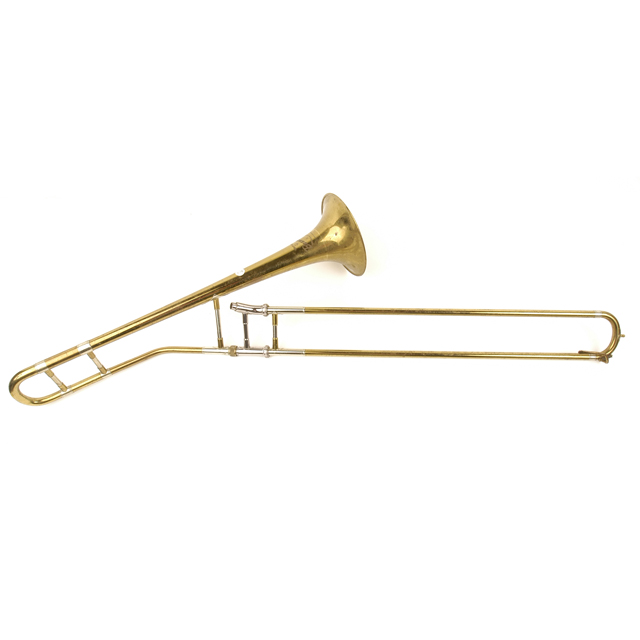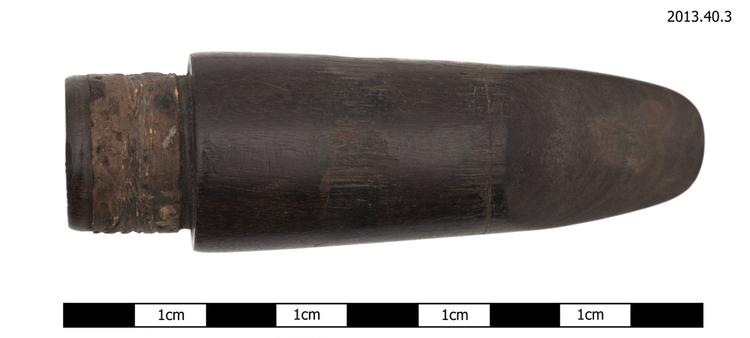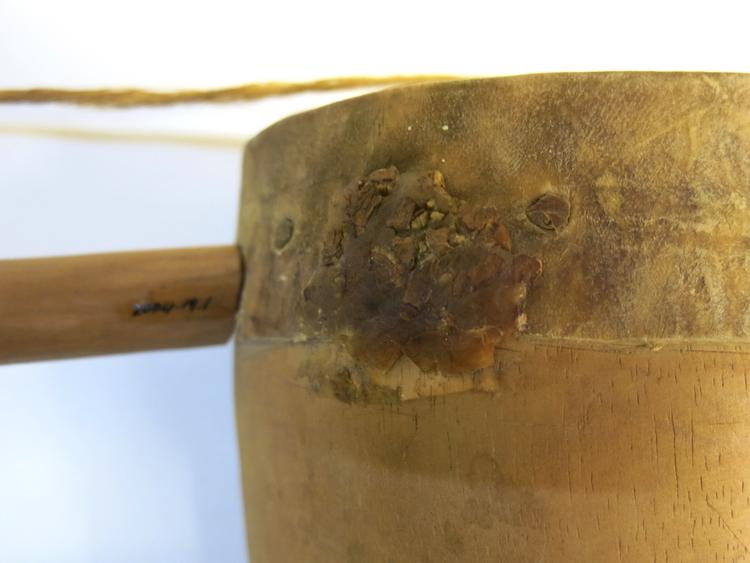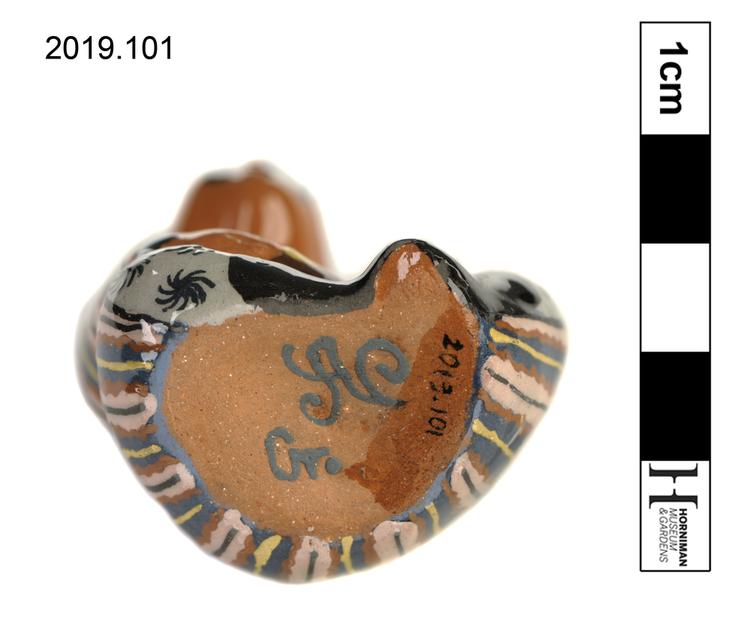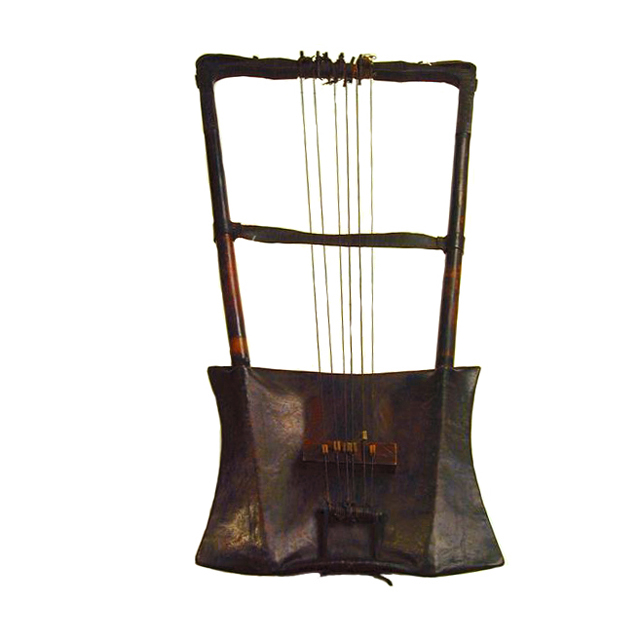

Beganna (begana) lyre. The resonator is of wood; made in a complex shape, with a domed back but flaring to an in-curved rectangle at the front. A cruciform hole is cut into the back. The soundboard is of leather which is stitched together and covers about half of the resonator. The leather is decorated with blind-tooling in geometrical patterns. 6 heavy gut strings, but there are tops and tails for 4 more. One of the strings is broken at the yoke. The strings are tuned by toggles which are tied onto them as the strings are wound round the yoke. The strings are tied at their lower ends to a wooden rod which is attached by leather straps to the end of the instrument. The arms are cylindrical for most of their length, but a part at the top is of square section. The squared parts of the arms and the ends of the yoke are decorated with carved geometrical patterns. There are carved scrolls above the junctions of the arms and yoke. The bridge is a plain piece of wood with a slab leg at each end; as each string passes over it a tab of leather is looped around it. 9241 painted on the left arm. Geometric patterns scratched on the soundboard. Case label: Bagania. Box lyre. 18th century. Tigre, Ethiopia. Used for allegorical religious songs. Commentary: This is an aristocratic instrument which is used to accompany serious songs on religious subjects. It has a low register and is only played by men. The player rests the body of the beganna on the ground and plucks the melody notes with his left hand.
The beganna is associated in the religious texts of the Ethiopian church with the harp of King David. It is now an instrument of the nobility and of some priests. Its long strings are plucked with the fingers and thumbs. The beganna usually accompanies songs with religious themes.




